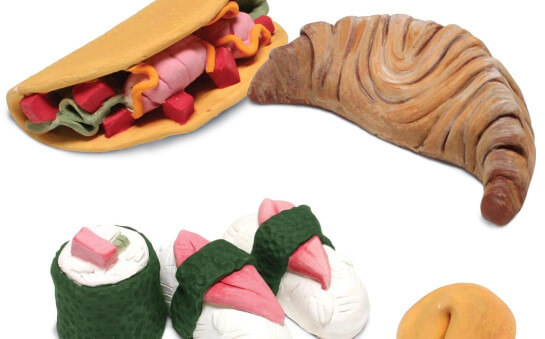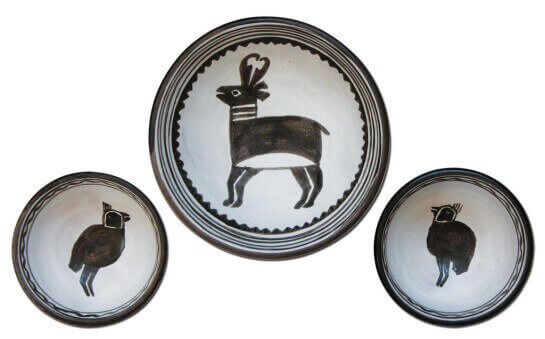Flock of Birds

As we go about our day-to-day activities, birds are the most common form of wildlife we encounter on a regular basis. They live secret and fascinating lives that pique our interest and serve as important subject matter throughout art history. From chickens to warblers, birds come in all shapes and sizes. Create a multi-species flock from pinched bowls and a few simple tools. Use firing or self-hardening clay over a couple of class periods. Start by looking at pictures of different types of birds and discuss their shapes and sizes. Birds can be sleek and minimal, like the Cat Bird, or have lots of visual texture, such as the Starling. The starting shape of the pinched bowl will influence the bird form. The birds can also be used to create functional items like salt and pepper shakers, bud vases, and rattles.
Supplies List
- Low Fire Clay
- Self Hardening Clay
- Scoring Tool
- Rubber Rib No. 1
- Sureform
- Potter's Needle Tool
- Hardwood Paddle
- Sponges
- Newspaper
- (LM) Low Fire Matte Glaze
- Glaze Brushes

Start with a ball of clay
Shape into a pinch bowl
Widen the belly
Turn the pot over and let the form stiffen up some. Then, cradling the pinch pot in the palm, use the index and middle fingers to belly out the form while keeping the rim from expanding. Use your thumb to push the rim back in if it starts to widen.
Score the rim
Once the shaping is finished, score the rim of the pinch pot with a fork or similar tool. Put small balls of clay wrapped individually in toilet tissue or newspaper into the pot if making a rattle.
Squish the rim together
Using thumb and forefinger on both hands, push in the rim until it meets. Be careful not to squish in the sides of the pinch pot.
Close rim
Add coil
Roll out a coil about the thickness of a pencil and long enough to cover the seam. Slip and score the coil and use it to fill in and strengthen the seam.
Smooth seam
Use a serrated rib or fork to work the coil into the pinch pot. Smooth out the coil with fingers or a flexible rib.
Base form
Look at the form and decide which end will be the tail. Smooth and pull the tail from one end of the closed pinch pot. It may be necessary to pinch a little clay off the tail to keep it from getting too large. This clay can be added to the other end for the head. Work the tail into a point and pat the rump to round it up.
Form Head
Smooth and pull the other end into the head. Add small bits of clay to the neck and beak area to get the desired proportions.
Beak
Round the beak at the end so it will be resistant to chipping.
Paddle
Gently paddle the body of the bird to compress the lumps left from pinching. Tap the base of the bird on a flat surface to create a resting point.
Scrape smooth
Allow the bird to harden slightly before refining the surface. Use a Sureform or clay shredder to scrape out any lumpiness. Be sure to define the base so the bird will sit without rocking.
Scrape
Follow up with a finely serrated rib to cut down the marks left from the shredder.
Refine
Once the bird has been roughed out with the serrated rib, use a damp sponge and flexible rib to smooth out the scratch marks. This will leave a clean surface ready for carving in detail or leave the bird smooth for a flawless glaze finish.
Make air hole
The bird is now ready to dry. Use a needle tool or small drill bit to make an air hole somewhere near the base of the bird. Cover the bird loosely with plastic to allow it to dry slowly and evenly. If using firing clay, bisque fire when dry to cone 04. If using air-dry clay, allow to dry at room temperature and away from heat until hard. During drying, rotate object occasionally so all surfaces are exposed to air. Drying time depends on size and thickness of the object.
Fire and Prepare to Glaze
After bisque firing, moisten the bird with a damp sponge prior to glazing. Use a soft natural-hair brush and AMACO® Matt (LM) glazes. Hold the bird at the beak and tail or set it on the table to apply glaze.
Glazing
Use 3 good coats of glaze and cross hatch the brush strokes for a smooth even finish. Be careful not to allow glaze to fill the air hole. Glaze fire to cone 05.




